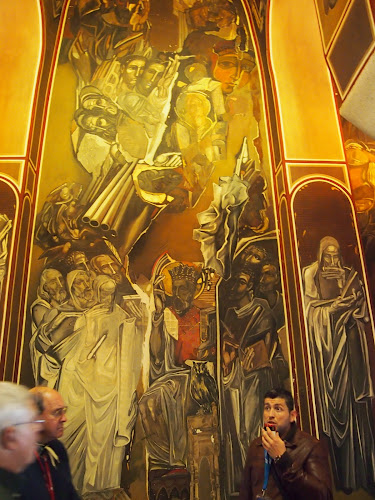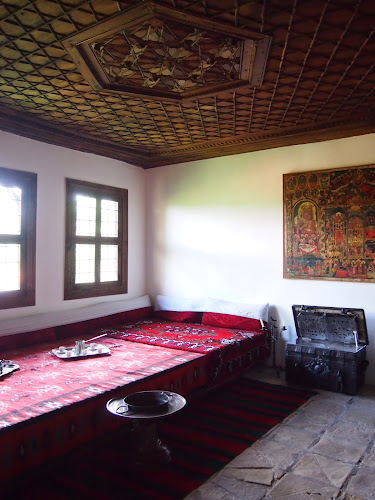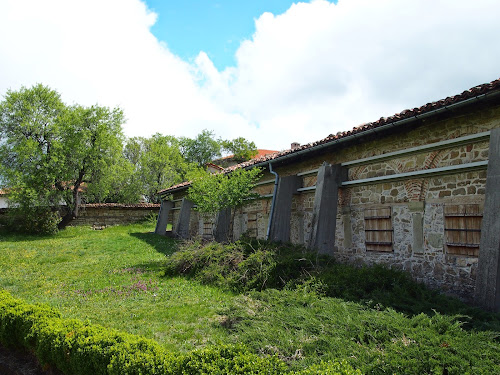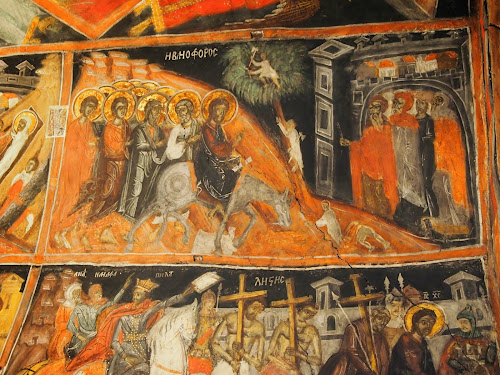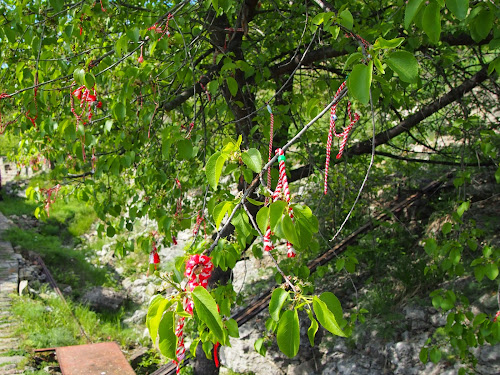Having docked in Rousse, Bulgaria, we traveled into the mountains to the neighboring towns of Arbanasi and Veliko Tărnovo.
Veliko Tărnovo, clinging to a steep hillside, was the capital of the Bulgarian Second Empire from the 12th through the 14th Centuries.
Overlooking the town on a hill with evidence of human habitation going back as far as the third millenium BC, is Tsarevets Fortress. It was the fortified castle for the ruling dynasty during the Second Empire. Back to our favorite medieval means of dealing with the unwanted, it features a rock from which traitors were thrown, high above the river, known as Execution Rock. The church at the top of the hill was reconstructed in the early 1980s and features rather odd secular/religious frescoes in the socialist realist style that prevailed across the communist bloc prior to 1989.
In Arbanassi there is a museum in Konstantsaliyata’s House, an example of a well-to-do Ottoman family dwelling from the 18th century. Arbanassi remains a desirable place for privileged Bulgarians to have second homes.
The Church of the Nativity of Christ was built in the 15th to 17th Centuries in Arbanassi in compliance with the requirements of the Ottomans. As you can see, an early way of dealing with height restrictions for buildings was to build them half buried in the ground. The frescos inside are original, albeit cleaned up and restored. The bottom photo features a fresco teaching the lesson of Palm Sunday, the day of our visit.
Amanda works off some of her lunch.
Martenitsa are made of red and white yarn and are given by Bulgarians to friends and loved ones. They are worn on your clothes or wrist until you see a stork or a budding tree. Then they are hung on a fruit tree to bring good luck for the emerging spring.




